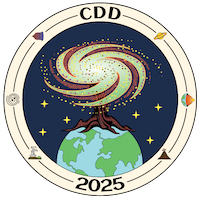Orateur
Description
Badlands have been extensively studied for their erosion dynamics and sediment transport due to their remarkable sensitivity to climate forcing [1]. These erosion processes, primarily driven by mass wasting, are typically investigated at the plot scale using rainfall experiments [2] or at the catchment scale by integrating export measurements at gauging stations [1]. However, detailed spatial analysis of sediment dynamics within a catchment remains scarce [3]. This lack of spatially explicit data limits our ability to identify the contributions of various mass-wasting processes to the overall sediment budget and landscape dynamics.
This work is based on the Draix-Bléone observatory [4], which provides time series of suspended and deposited sediment loads for the Laval catchment (French Alps). This small (86ha), steep, denuded (up to 57%) and unmanaged catchment is instrumented at its outlet since 1983. These chronicles emphasize very high denudation rates (>300 T/ha/year) associated to strong seasonal storms [1]. In addition, we analysed a 6-year diachronic LiDAR scans that cover the whole catchment and conducted shallow-water modeling of its hydraulic network with the GraphFloods algorithm [5]. This allow us to assess the contributions of the different erosion processes to the geomorphological dynamics as well as sediment residence.
Our results highlight several compartments of the critical zone that contribute significantly to the total sediment budget. In particular, landslides and crests failures account for 15% of the export measured at the outlet, although these areas together cover only about 1ha. This corresponds to the extreme erodibility we measure in marls on submetric and metric specific drainage areas. We also identify important sediment sinks that regulate export, such as the narrowing of the main channel upstream of a slow-moving landslide. In addition, uncleared debris on slopes and in elementary gullies represent in average 30% of the mass balance of associated slides, underscoring their central role in sediment dynamics.
Our results highlight the complex interplay between sediment sources and sinks in shaping steep badland catchments. By combining high-resolution spatial analysis with long-term monitoring data and hydraulic modeling, this study provides new insights into how small-scale processes drive large-scale sediment budgets. It contributes to wider efforts to model sediment flows in sensitive and rapidly changing landscapes.
[1] N. Mathys et al., (2003). Erosion quantification in the small marly experimental catchments of Draix (Alpes de Haute Provence, France). Calibration of the ETC rainfall-runoff-erosion model. CATENA. DOI:10.1016/S0341-8162(02)00122-4. [2] D.J. Oostwoud Wijdenes and P. Ergenzinger (1998). Erosion and sediment transport on steep marly hillslopes, Draix, Haute-Provence, France: an experimental field study. CATENA. DOI:10.1016/S0341-8162(98)00076-9. [3] J. Bechet et al., (2016). Detection of seasonal cycles of erosion processes in a black marl gully from a time series of high-resolution digital elevation models (DEMs), Earth Surface Dynamics. DOI:10.5194/esurf-4-781-2016. [4] S. Klotz et al., (2023). A high-frequency, long-term data set of hydrology and sediment yield: the alpine badland catchments of Draix-Bléone Observatory. DOI:10.5194/essd-15-4371-2023 [5] B. Gailleton et al., (2024). GraphFlood 1.0: an efficient algorithm to approximate 2D hydrodynamics for Landscape Evolution Models, EGUsphere, DOI:10.5194/egusphere-2024-1239.
| Speaker information | PhD 3rd year |
|---|

